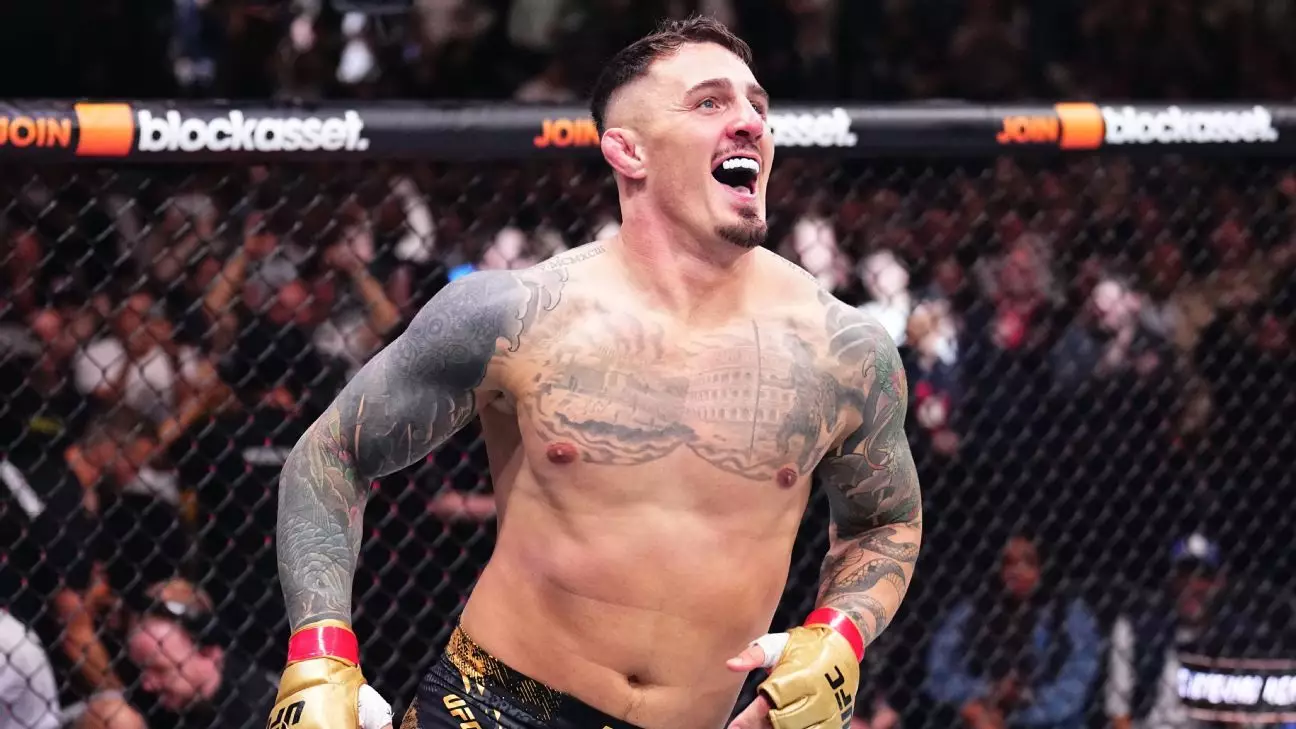The heavyweight division in the UFC has historically been a battleground of unpredictable power and relentless competition, and recent events only emphasize that fact. With Jon Jones’ retirement marking the end of an era—an era where he dominated with a blend of technical mastery and unyielding tenacity—the division now faces a critical crossroads. While Jones’s departure might suggest a lull, it also opens doors for new stars to ascend. The division’s landscape has always been shaped by larger-than-life personalities and one-punch knockout power, and the question now is whether the next wave will rise to fill the vacuum or if the division will linger in stagnation.
Jones’s exit, though well-earned, exposes a void in the division’s narrative—a rare moment where the sport’s greatest feels less like a culmination and more like a loss. His long, drawn-out farewell saga complicated perceptions, leaving fans and analysts craving a genuine farewell match and a definitive chapter. However, the UFC’s ability to pivot from disappointment and turn attention to emerging contenders will determine whether the heavyweight division remains a hub of excitement or becomes an underwhelming waiting game.
Emerging Contenders and the Promise of New Rivalries
Current prospects like Tom Aspinall symbolize hope amid uncertainty. The young British powerhouse has quickly proven himself, dispatching heavyweights such as Curtis Blaydes and Sergei Pavlovich within minutes, often in spectacular fashion. His record, dominated by first-round finishes, underscores his potential to ascend to the upper echelons of the division. But what truly makes Aspinall’s trajectory intriguing is what he represents: a fresh face capable of challenging the narratives spun by aging veterans and the ghost of Jones.
Yet, Aspinall’s youth and undefeated streak alone do not guarantee domination forever. The division’s raw talent pool still harbors formidable fighters capable of turning the tide. Ciryl Gane, for example, presents a compelling test. His technical skills and athleticism could threaten Aspinall’s streak if he manages to shore up some gaps in his game. The looming possibility of a Gane-Aspinall rivalry could inject fresh energy into a division otherwise seen as top-heavy, fraught with fleeting stars and flash-in-the-pan performances.
The real game-changer, however, lies in high-profile super fights that transcend rankings and generate buzz. A potential clash between Aspinall and Alex Pereira—who is considered undersized yet still dangerous—could not only rejuvenate interest but also set new benchmarks for heavyweight matchmaking. The allure of these matchups depends on timely promotion and strategic booking that excites fans and establishes new legends in the process.
The Veteran Factor and Veteran’s Path to Glory
While the new generation rises, seasoned veterans like Derrick Lewis remind us of the division’s unpredictable nature and enduring appeal. Lewis’s experience, coupled with his knockout power, makes him a perennial fan favorite, and a victory at Nashville could reinsert him into meaningful title conversations. Despite being ranked No. 9, Lewis’s viability for a title shot, especially through knockout-heavy performances, exemplifies the division’s unpredictable hierarchy: win streaks are short, and the slightest punch can alter Fate.
Lewis embodies the combustible spirit that defines heavyweight MMA—the kind that refuses to fade quietly into retirement. For fighters of his caliber, every fight is an audition, and a knockout victory could propel him or others into a new title shot. This scenario highlights an essential truth about heavyweight MMA: experience and raw power often outweigh strict rankings, making the division inherently volatile and thrilling.
Off to the side, the division’s history looms large. Jones’s dominance in an era saturated with legendary names set a benchmark that Aspinall and others are now measured against. Yet, as Jones departs, the question becomes whether anyone currently in the heavyweight roster can emulate that level of dominance or if the division will be marked by fleeting moments of brilliance before fading into obscurity once more. The future hinges on whether emerging fighters can step up quickly enough to escape the shadows of the past.
The Challenge of Building a Legacy in the Current Climate
Aspinall’s rapid rise and penchant for early finishes have set an ambitious standard. But legacy isn’t just built on wins; it’s cemented by memorable fights, dominant reigns, and iconic rivalries. Unfortunately, the division’s current lack of marquee matchups leaves fans hungry for theatrical moments. Aspinall, despite his promising start, needs more high-profile fights to establish himself firmly—particularly against fellow top contenders already carving competitive paths.
Meanwhile, the possibility of a fight with Gane or Pereira could define the next chapter of heavyweight history. But those bouts hinge on timely matchmaking and the UFC’s willingness to gamble on future pay-per-view draws. The division’s inherent volatility complicates this, with fighters often resorting to knockout or bust scenarios to make a mark.
From a broader perspective, heavyweight MMA remains a test of resilience and unpredictability. The division could either flourish with fresh, exciting rivalries or continue its pattern of fleeting interest and unfulfilled potential. The key lies in the UFC’s capacity to identify and invest in fighters who can elevate the division—whether through compelling personalities, historic matchups, or record-breaking performances.
In this shifting landscape, aspirations for legacy and greatness are fueled by the risk-taking that defines heavyweight combat. It is every fighter’s dream, but only a few have what it takes to cement a lasting imprint on the sport’s history. As we await the upcoming bouts, the question remains: will the next heavyweight champion be born from the current contenders’ chaos or from newcomers yet to emerge from the shadows? The division’s fate depends on its ability

